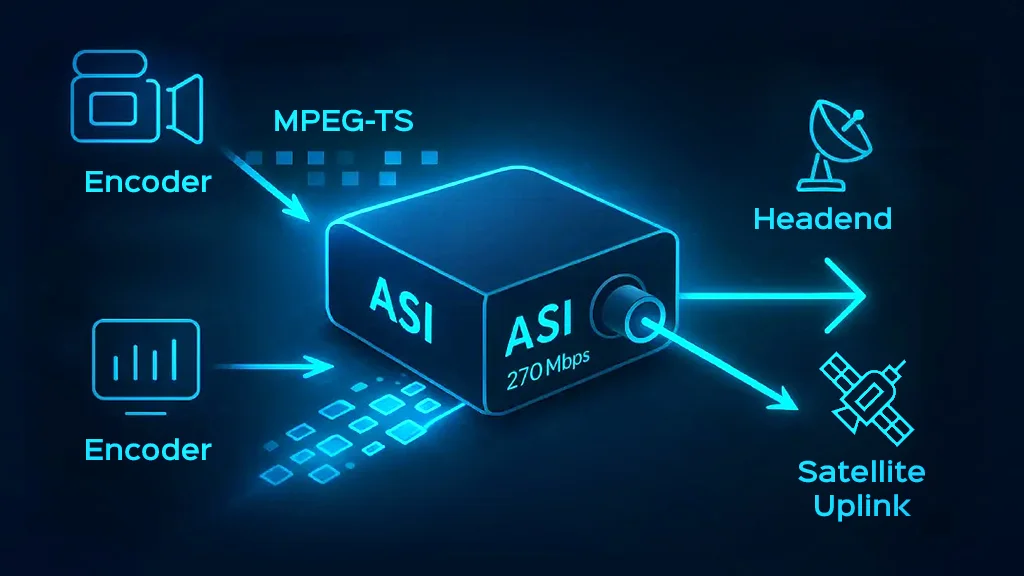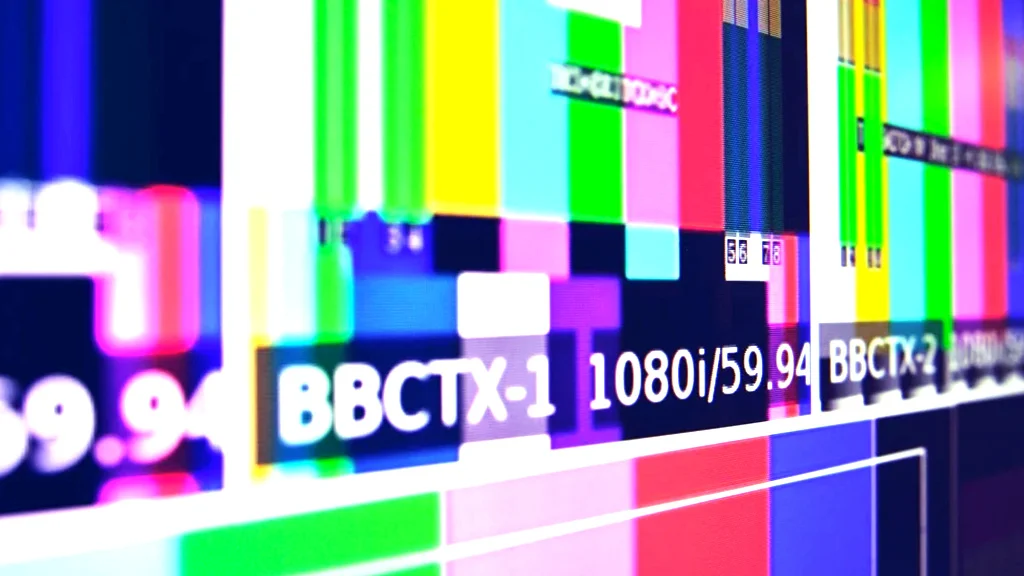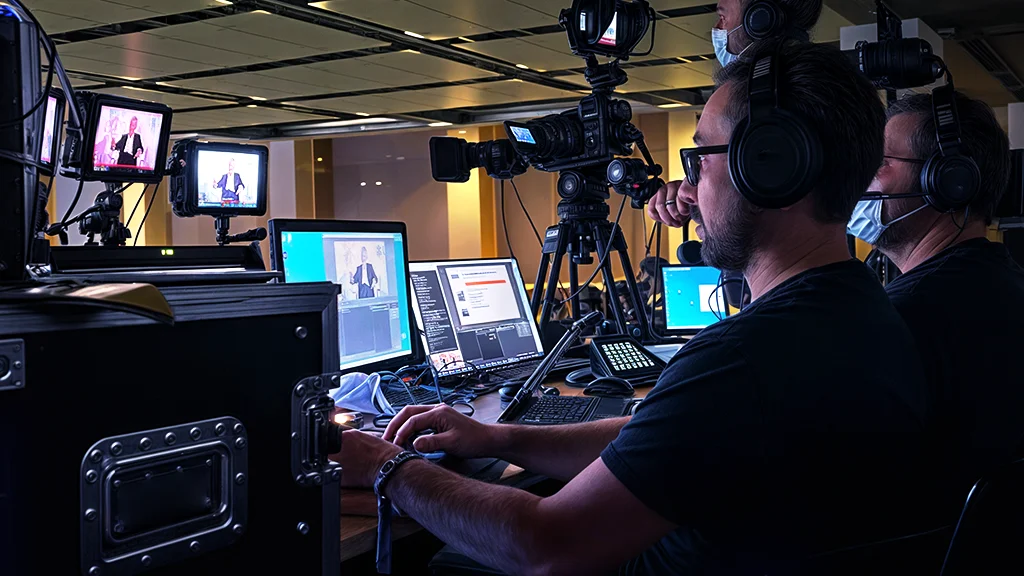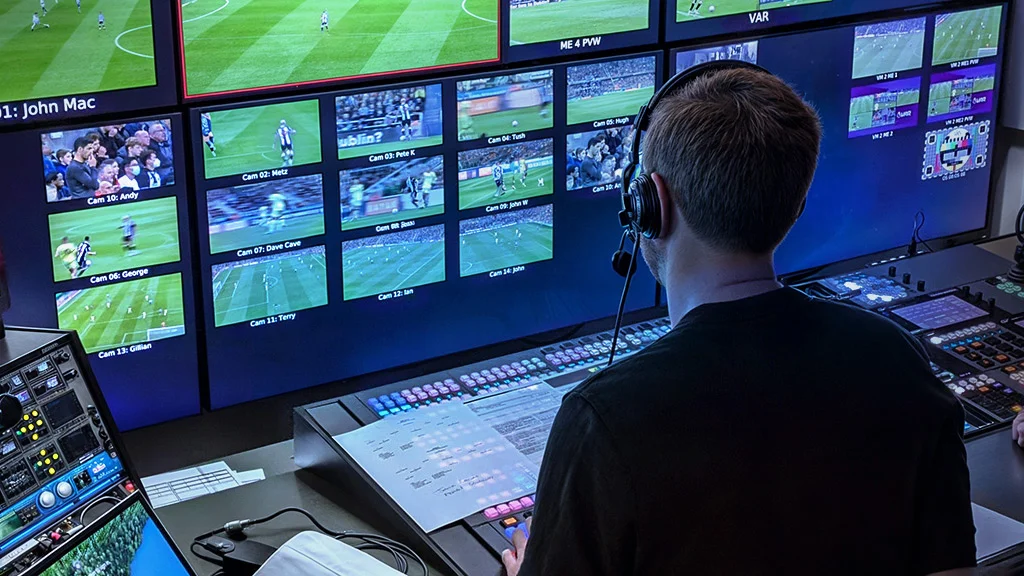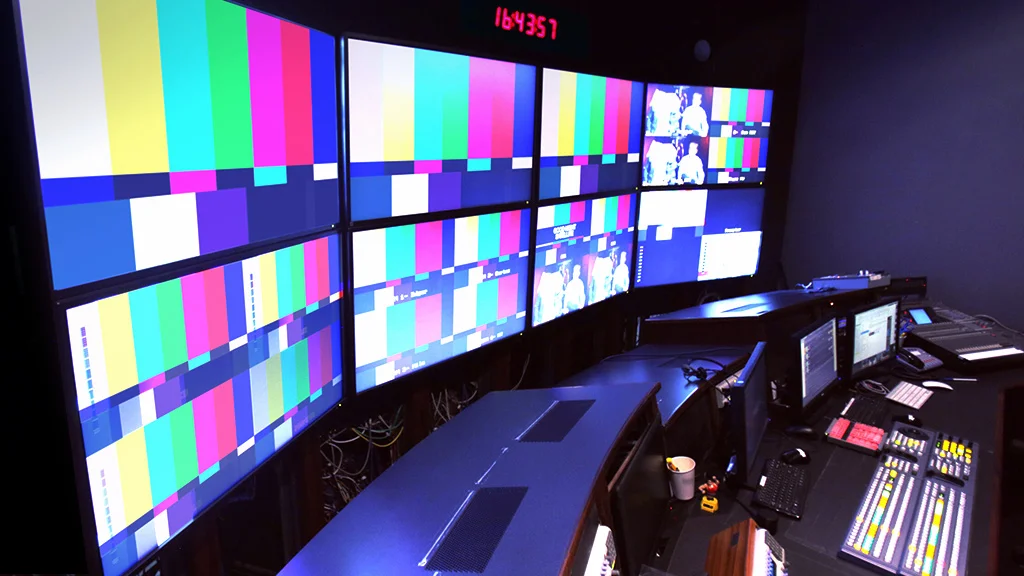
- Article
Why Color Bars Remain Essential in Modern Digital Broadcast System
Color bars remain essential in modern digital broadcast systems because they serve as a universal reference standard for image quality, calibration, and troubleshooting. They help ensure consistent color reproduction, luminance, and signal integrity across different equipment and transmission stages. Despite digital advancements, color bars remain in use today for purposes such as broadcast signal calibration, assessing broadcast color bars like SMPTE color bars, and spotting technical issues at an early stage. They are crucial in procedures like broadcast signal testing and for managing live broadcast delay when synchronizing signals during live transmissions.
This article explores the origins, evolution, and ongoing relevance of color bars, detailing their applications across various stages of production and transmission, alongside practical guidance on generating and interpreting these standards within digital systems.
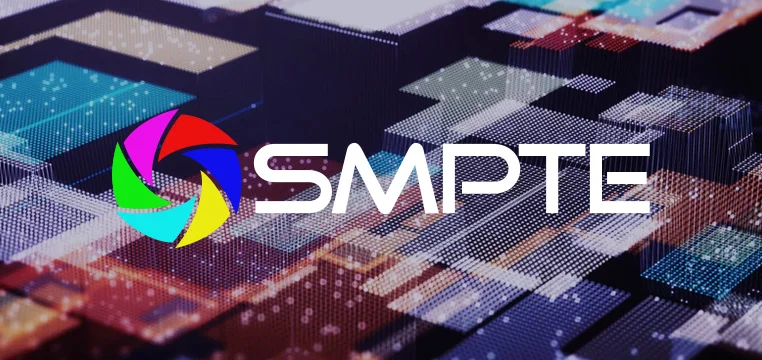
Color Bars Explained: From Basic Patterns to SMPTE Standards
Color bars are a test pattern used in television and video production to calibrate displays, verify signal integrity, and ensure color accuracy. These patterns act as a visual guide for engineers and technicians. Standard color bar layouts typically include primary colors (red, green, blue) and secondary ones (yellow, magenta, cyan), along with black and white for contrast and balance. These are arranged in specific patterns to assess basic color accuracy and tonal levels.
The SMPTE color bars define a particular standard for color bars, which is widely used in professional broadcasting. The SMPTE pattern features a sequence of color patches including white, yellow, cyan, green, magenta, red, and blue, along with gray and black levels. These patterns are used for calibration, like adjusting TVs, monitors, or cameras for accurate color and brightness, troubleshooting issues such as color bleeding, signal degradation, or misalignments, and maintaining standardization to guarantee uniform color and signal quality across production and broadcast environments.
Furthermore, color bars are often presented at different saturation levels, notably 100% and 75%. The 100% bars represent fully saturated, vibrant colors, while the 75% bars are slightly desaturated, providing a reference point for fine-tuning color intensity and balance. Using broadcast signal test techniques with these color bars, technicians can set color levels, ensuring the picture looks natural and consistent under various viewing conditions. Also, modern systems often utilize a broadcast multiviewer to monitor multiple signals simultaneously, ensuring that the broadcast signal calibration remains intact before transmission.
Evolution of Color Bars: From Analog to Digital
The evolution of color bars reflects significant technological progress from analog broadcasting to modern digital systems. They have transformed from basic test patterns to highly sophisticated tools supporting broadcast signal calibration in high-resolution environments.
Analog Era
During the analog era, early television systems used simple monochrome test patterns, which gradually developed into full-color patterns as color broadcasting became standard. Standardized patterns like SMPTE color bars were created for calibration purposes, ensuring consistent color reproduction over analog transmission. However, these patterns had limitations. They were susceptible to signal degradation, noise, and inconsistencies caused by the inherent imperfections of analog transmission. Despite these challenges, broadcast color bars served as essential references in maintaining image quality.
Transition to Digital
Moving to digital broadcasting, color bars evolved into part of more precise, computer-generated test signals. Digital standards provide increased accuracy with exact pixel-level control, enabling perfect broadcast signal calibration. Embedded metadata and timecode support seamless signal management, essential during live events where live broadcast delay can be necessary to ensure quality control.
Modern digital broadcast color bars accommodate formats such as HD, 4K, and HDR, with patterns designed for high-resolution displays, broader color gamuts, and higher bit depths, including standards like BT.2020. These are embedded directly within broadcast streams, used extensively in post-production, and transmitted via digital interfaces such as SDI, HDMI, or IP-based systems.
Why Color Bars Still Matter Today
Color bars remain important today because they are essential for maintaining the quality and consistency of video and broadcast signals, even in the digital age. Here’s why they still matter:
Calibration and Setup: They assist technicians in broadcast signal calibration by calibrating cameras, monitors, and equipment to ensure accurate colors, brightness, and contrast. Using broadcast color bars for this purpose helps achieve precise calibration standards.
Signal Verification: It’s used to quickly verify that transmission or recording system is operating correctly before broadcasting or editing.
Troubleshooting: When issues such as color mismatches, signal degradation, or equipment faults occur, broadcast color bars serve as a reliable reference to diagnose problems in both live and post-production workflows.
Standardization: Ensures consistent viewing experiences across different devices, platforms, and locations, compatible with industry standards.
Quality Control: Regular checks with color bars prevent gradual degradation in color quality over time.
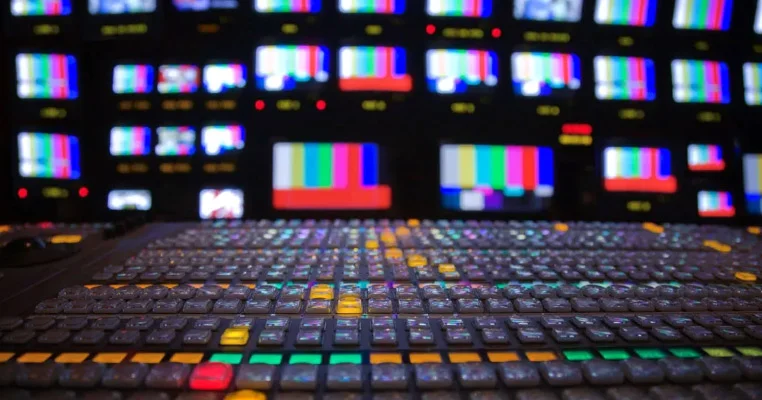
Common Applications of Color Bars in Modern Broadcast Systems
Production
They are primarily employed at the beginning of filming for camera calibration, ensuring accurate colors, exposure, and white balance. Broadcast color bars facilitate monitor setup, to ensure that displays are correctly calibrated for consistent on-set viewing. Additionally, color bars assist directors and cinematographers in shaping the overall look and verifying color consistency during filming.
Quality Control (QC):
During quality control, color bars serve as a key broadcast signal test to verify the proper transmission of color information, brightness, and contrast. They assist in diagnosing and correcting some issues such as signal degradation, color bleed, dropouts, or equipment malfunctions before broadcast. Moreover, they are used to confirm that footage complies with industry standards and broadcasting norms.
Post-Production
In post-production, color bars act as reference signals for color grading and correction, facilitating color matching across scenes. They ensure visual consistency during editing and compositing processes and verify the final output’s quality before distribution or broadcast.
Transmission and Broadcast
Throughout transmission, color bars assist in calibrating signals at transmission points to maintain accuracy. They are vital for real-time monitoring during live broadcasts to ensure ongoing signal quality. Many systems also incorporate auto-verification features that use color bars for continuous quality assurance.
Remote and Field Operations
In remote or field settings, color bars enable quick calibration checks of equipment and help maintain standards compliance across different locations. This ensures that broadcast quality remains consistent regardless of environmental differences.
In today’s digital workflows, color bars are integrated into systems, transmitted alongside program content, or used as adjunct test signals for ongoing calibration, playing a crucial role in maintaining high-quality, reliable broadcast standards.
How to Generate and Interpret Color Bars in a Digital broadcast Chain
In a digital broadcast chain, the process of generating and analyzing color bars requires accurate test signal creation, proper transmission, and detailed evaluation to maintain signal’s high quality.
Generation of Color Bars in a Digital Broadcast Chain
Use professional test signal generators or software that create standardized digital color bar patterns, typically conforming to SMPTE or ITU standards. These generators embed metadata, temporal information, and accurate color data into the signals. The generated broadcast color bars are then inserted at specific points within the video path, such as before encoding, after encoding, or during transmission, to verify the integrity of each link.
In modern systems, these signals are transmitted digitally via interfaces like SDI, HDMI, or IP networks and can be triggered automatically for ongoing broadcast signal calibration or manually during setup or troubleshooting.
Interpreting Color Bars in a Digital Broadcast Chain
To interpret color bars, begin with visual inspection to ensure that pattern appears uniform, with accurate colors, proper contrast, and sharp edges. Watch for issues such as bleeding, banding, or missing colors that could indicate signal problems.
Additionally, use waveform monitors or vectorscopes to analyze the signals, verifying that colors are within expected luminance and chroma levels, black and white bars are at correct IRE levels (such as 0 and 100), and the color gamut (like BT.2020 for HDR) is within the intended range. Digital signal validation is also crucial, involving checks for embedded metadata, correct sampling, and ensuring that there is no data loss, artifacts, or glitches in the transmitted test pattern.
Creating accurate digital color bars helps maintain uniform calibration throughout the entire broadcast chain. Interpreting these signals through visual inspection and waveform analysis confirms the signal’s integrity, helping to maintain high broadcast quality from production through transmission.

